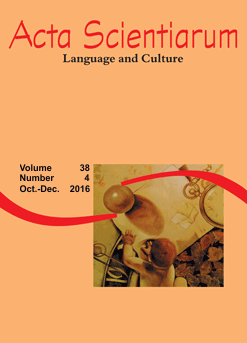<b>Third places and the interactive construction of interculturality in the English as foreign/additional language classroom
Abstract
Based on the assumption that the construction of interculturality in third places is essential for foreign/additional language teaching and learning, this paper aims at discussing how these third places are interactively constructed in real classrooms. In order to achieve that objective, I will first review some theoretical studies that have dealt with the construction of third places and interculturality in the classroom. Then, the methodological procedures will be explained. After that, I will contextualize, analyze and compare some real classroom episodes taken from different studies pointing out their different interactional features. The findings show that the episodes investigated present two types, having either an ‘essentialist cultural orientation’ or an ‘intercultural orientation’. In the former orientation, the episodes cannot be considered third places as culture is an object constructed as an entity in its own right (Liddicoat & Scarino, 2013). On the other hand, in the latter orientation, third places seem to be constructed as teachers and learners are seemingly interactively engaged in the practice of meaning-making by confronting different points of view.
Downloads
DECLARATION OF ORIGINALITY AND COPYRIGHTS
I Declare that current article is original and has not been submitted for publication, in part or in whole, to any other national or international journal.
The copyrights belong exclusively to the authors. Published content is licensed under Creative Commons Attribution 4.0 (CC BY 4.0) guidelines, which allows sharing (copy and distribution of the material in any medium or format) and adaptation (remix, transform, and build upon the material) for any purpose, even commercially, under the terms of attribution.
Read this link for further information on how to use CC BY 4.0 properly.




















6.png)









